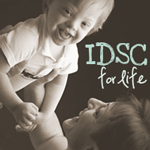For patients suffering from Down syndrome, the source of their condition can be traced back to just one extra chromosome inherited during development – chromosome 21.
While it is still unclear exactly how this extra copy causes the symptoms of Down syndrome – also known as trisomy 21, its presence in a person’s genetic code is associated with delayed cognitive ability, slowed physical development and a whole host of health conditions, including congenital heart disease, cancer and early on-set Alzheimer’s.
But now, researchers say they have found a way to turn off the extra copy of chromosome 21.
In a new study published online in the journal Nature, scientists from University of Massachusetts Medical School (UMMS) harnessed the abilities of a naturally occurring gene called XIST that acts as an “off switch” in X chromosomes. In a culture of stem cells, the researchers were able to repurpose the XIST gene so that instead of silencing X chromosomes, it silenced the extra chromosome 21 instead.
Though the research only shows proof-of-principle for turning off the chromosome – meaning the method is a long way from being utilized in humans – the findings have huge implications for the future of Down syndrome research. Researchers hope this study will pave the way for a better understanding of the disorder’s pathology and potentially help to create new therapeutic targets for therapies.
“This is the beginning of this idea, and we’re hoping more investigators get interested,” lead researcher Jeanne Lawrence, professor of cell and developmental biology at UMMS, told FoxNews.com. “… We used epigenetics, a new concept, to change the way the DNA is expressed, not changing the DNA itself. This could have a lot of promise in other ways for Down syndrome and other disorders.”
Each human inherits 23 chromosomes from their mother and 23 from their father, equaling 46 chromosomes in each cell. Individuals with Down syndrome inherit three (instead of two) copies of chromosome 21, which ultimately causes their “trisomy 21.”
According to Lawrence, the team’s method for silencing this chromosome was inspired by a naturally occurring process that occurs in women every day.
“What’s important in biology is not that you have the right sequence to your DNA, but you have the right balance of DNA,” Lawrence said. “Women have two X chromosomes and men have one X and Y. Since the Y chromosome lacks a lot of the genes in the X chromosomes, women have more expression of X chromosome genes than men – well that wouldn’t work biologically. So nature had to devise a mechanism to equalize that.”
Lawrence had contributed to a previous study, which had identified that mechanism as the XIST gene, a piece of DNA located in the X chromosome that controls whether or not the chromosome can be silenced. The XIST gene makes a unique non-coding RNA, which accumulates in the nucleus of the cell of the chromosome, triggering changes to the way the chromosome is packaged within the cell. This ultimately renders the chromosome inactive – preventing its DNA from producing proteins and other components.
Hoping to recreate this effect, Lawrence and first author Dr. Jun Jiang, along with UMMS colleague Dr. Lisa Hall, devised a way to insert the XIST gene into the extra chromosome 21 of trisomic cells. In a culture of pluripotent stem cells derived from the skin cells of a Down syndrome patient, the XIST gene was inserted into the chromosomes through the use of zinc finger nuclease (ZFN) technology. The technique ultimately allowed them to cut each chromosome at a specific location in its sequence and then paste the gene into that cut site.
“(Once the gene was inserted), we split the cultures, and took half the cells and turned on the XIST gene to silence the chromosome and (in) the other half we didn’t do that,” Lawrence said. “Then we directly compared how the cell behavior changes…and the neural progenitor cells formed much more quickly in the (cultures) that we had silenced. So you can quickly start to say, ‘What are the pathologies of the different cells and the different organs?’”
According to Lawrence, the success of their findings will ultimately help researchers better understand the different cell pathologies in patients and how the disorder progresses during development. She also noted the more significant implication of their research: that it could ultimately lead to the utilization of chromosome therapies in Down syndrome patients. However, it may be many years before these treatments are realized.
Approximately 6,000 babies with Down syndrome are born each year in the United States, according to the Centers for Disease Control and Prevention. Risk factors for Down syndrome include having a parent with a chromosomal disorder or having a sibling with Down syndrome or another chromosomal disorder. However, the mechanisms behind the condition are still largely unknown. Lawrence hopes that her lab’s findings will help get more people interested in better understanding the disorder.
“Down syndrome hasn’t received as much attention for therapeutics, partly because it’s so complex and there (are) other procedures people use to treat it,” Lawrence said. “Also, people think Down syndrome is going away, but it’s not going away. I think it’s good if this can help draw attention to research (for the disorder).”

Tweet























